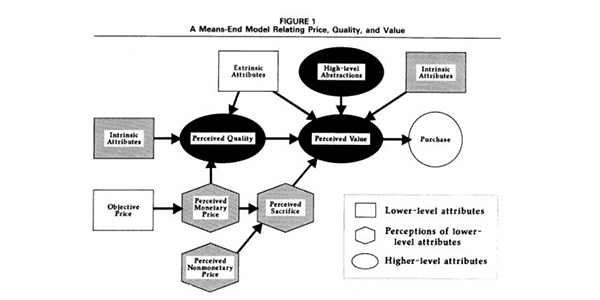
Brand vs. Rational
Let’s say that your child has come down with a cold, and so you find yourself at the local pharmacy. You’re presented with an array of options, but you can quickly distill those options down to two ultimate choices; generic or name brand? Assume even further that you’re a fairly well educated (and rational) human being who understands perfectly that these drugs are regulated by the FDA.
You know that the active ingredients in those medications are entirely the same, so why do you find yourself walking away with the more expensive Tylenol brand, rather than Walgreen’s generic product? It’s probably because somewhere you decided to believe that Tylenol works better, right? Well, you’re not alone. There are multiple studies published online that shed light on this irrational human behavior, and not just medicinal products.

Brand vs. Quality
As consumers, we have an incredibly difficult time objectifying quality when making purchase decisions. There are factors we use to deduce objective quality of a product, such as whether or not the product is capable of accomplishing a task or a goal. “Measurable and verifiable superiority”, according to some. But then again, our perceived quality of a product is always present.
Windows computers arguably perform the same necessary functions as Apple’s MacBook, sure there are differences, but you’ll be splitting hairs. This is when we start looking to other factors to tap in and help guide us. Perceived quality of product is when we start attributing our own personal preferences to the quality of a product. For example, if you identify as a creative, you may believe that Apple computers will empower you to excel at your discipline- amplifying your perceived quality of the product.

Brand vs. Price
Price is another external factor that we often use to discern value & quality. We typically think of price as a sacrifice we are making, whether it is strictly monetary or other costs such as time and psychological costs (stress). More often than not, we’re willing to pay more for convenience, in hopes of saving time. The price-quality consumer relationship affects us in other ways as well.
There is significant marketing research showing a correlation between the price of a product and the perceived quality of the product itself. A study by CalTech revealed that participants who were told they were drinking the $90 bottle of wine claimed it tasted much better than the $10 bottle of wine, even though the product was actually the exact same thing! However, studies have also shown that this relationship does not remain consistent within all industries and product categories. Categories where we don’t expect there to be much innovation or variation, such as paper towel or other household items, we look to price as an indicator of sacrifice only. However, when you’re considering a product in a category where innovation and variation is common, like consumer electronics, you’ll often use price functioning as an indicator of quality.

The Big Idea
A key component of good brand strategy is to recognize and identify the multitude of ways your customers are attributing value and quality to your products, and then build a strategy that gives your brand the competitive advantage.
Is your brand’s messaging or design providing your potential customer with intrinsic beliefs of quality and value?
Does your brand’s look and feel compliment the asking price of your product or service?
Would you benefit from charging more, and building a brand that customers will perceive as being higher quality?
At Deksia, these are the questions we devote our time to. Join the conversation today by scheduling a free 15 minute chat about your brand!



